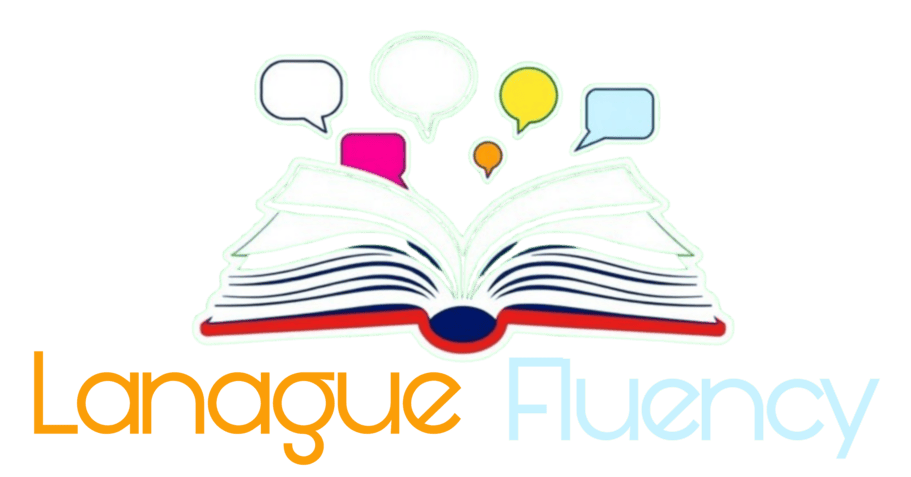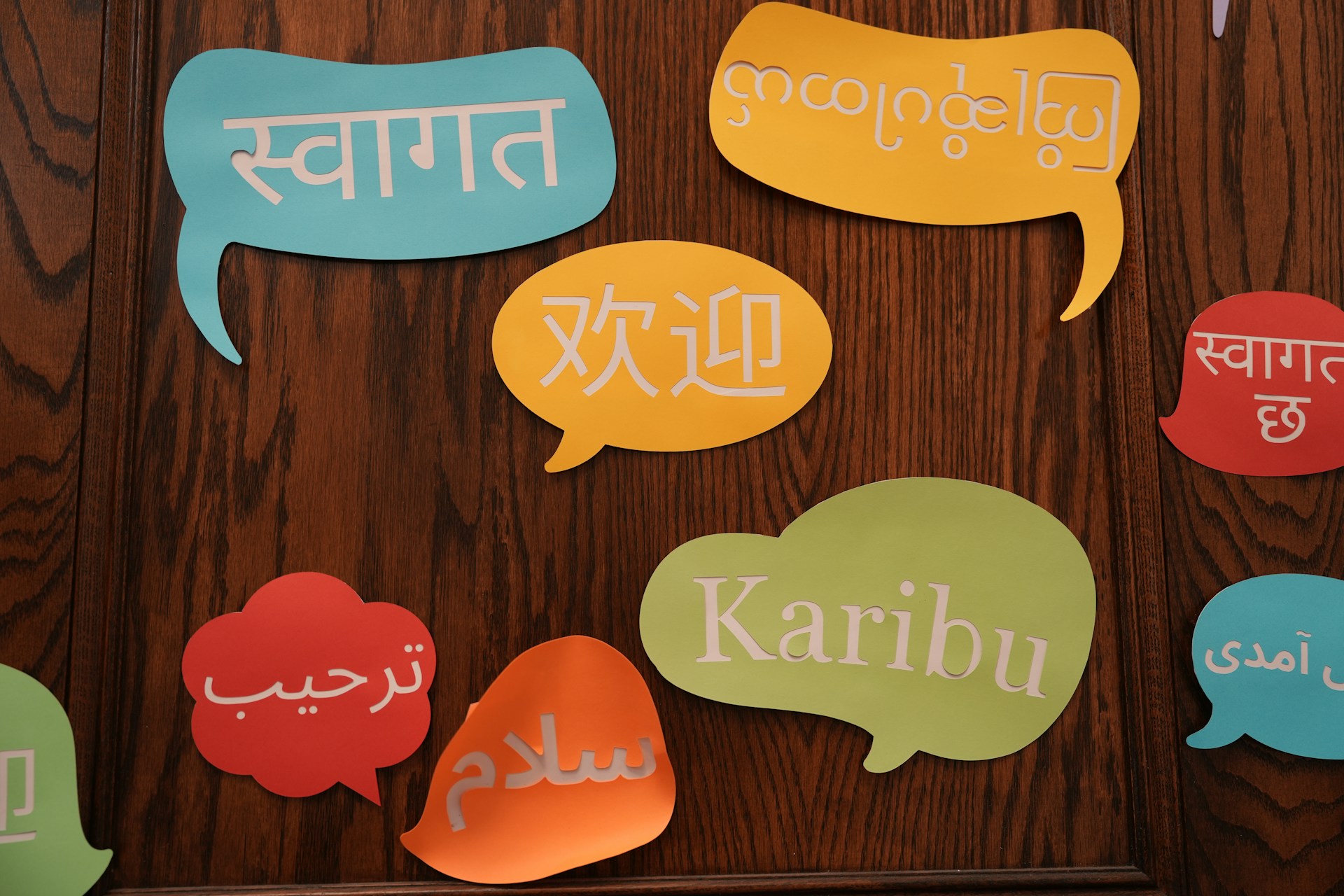The Benefits of Learning Multiple Languages Simultaneously
Learning multiple languages simultaneously can provide a range of advantages that extend beyond simply being able to communicate with more people. It can enhance cognitive abilities such as problem-solving skills, multitasking, and memory retention. By engaging with different language structures and vocabulary sets, learners can improve their overall mental flexibility and creativity.
Furthermore, mastering multiple languages can open up new opportunities for personal and professional growth. Whether it’s expanding career prospects, developing cultural understanding, or simply enjoying travel more fully, being multilingual can enrich one’s life in countless ways. The ability to switch between languages effortlessly can also lead to improved social connections and a greater sense of inclusivity within diverse communities.
The Challenges of Learning Multiple Languages Simultaneously
Mastering multiple languages at the same time can be an enriching experience, but it also comes with its fair share of challenges. Firstly, one of the main difficulties faced is the potential for language interference. This occurs when elements of one language start to intrude upon another, leading to confusion and errors in communication. Moreover, juggling multiple languages can sometimes lead to a lack of focus or depth in each language, making it harder to achieve fluency in any one of them.
Another challenge in learning multiple languages simultaneously is the risk of overwhelm and burnout. Trying to divide your time and energy among several languages can be mentally taxing, potentially hindering your progress in all of them. Additionally, different languages may have unique grammar rules, vocabulary, and pronunciations that require dedicated practice and attention to detail. Finding a balance between mastering each language individually while also progressing in others can be a delicate task that requires careful planning and strategic language learning techniques.
Understanding Language Similarities and Differences
When learning multiple languages simultaneously, it is essential to have a clear understanding of the similarities and differences between the languages you are studying. By recognizing commonalities in vocabulary, grammar structures, and phonetics, you can leverage your existing knowledge to accelerate your learning process. For example, if you are fluent in Spanish and are learning Italian, you can easily identify similarities in vocabulary and verb conjugations due to their shared Latin roots.
On the other hand, recognizing the differences between languages can also be beneficial in avoiding confusion and developing a more nuanced understanding of each language. By acknowledging unique grammar rules, pronunciation patterns, and cultural influences, you can tailor your language learning approach to address specific challenges and maximize your proficiency in each language. For instance, understanding the distinct tones in Mandarin Chinese compared to the pitch accent in Japanese can help you improve your speaking and listening skills in both languages.
Setting Realistic Language Learning Goals
When embarking on the journey of learning multiple languages simultaneously, it is crucial to establish realistic language learning goals. Setting clear objectives can help you stay focused and motivated throughout the language learning process. By breaking down your goals into smaller, achievable milestones, you can track your progress more effectively and celebrate your accomplishments along the way.
Consider the time and resources you have available for language learning, as well as your current proficiency level in each language. Setting realistic goals that align with your abilities and commitments can prevent feelings of overwhelm and ensure a more sustainable approach to language acquisition. Remember that learning a new language is a marathon, not a sprint, so pace yourself accordingly and be patient with your progress.
Creating a Balanced Language Learning Schedule
Creating a balanced language learning schedule is crucial for effectively mastering multiple languages. It is important to allocate dedicated time for each language, ensuring that you maintain consistency in practicing and studying. By establishing a routine that accommodates the different languages you are learning, you can optimize your learning experience and progress more efficiently.
Dividing your time evenly among the languages you are studying helps prevent overwhelm and ensures that you are giving each language the attention it deserves. Setting specific goals for each language and incorporating varied activities such as listening, reading, writing, and speaking into your schedule can enhance your overall language skills. Consistency is key in language learning, and a well-balanced schedule can help you stay on track and make steady progress in mastering multiple languages.
Utilizing Language Learning Apps and Tools
When it comes to learning multiple languages simultaneously, utilizing language learning apps and tools can be incredibly beneficial. These resources offer a wide range of features, from interactive lessons and vocabulary building exercises to pronunciation practice and cultural insights. With the convenience of having these tools at your fingertips, you can easily incorporate language learning into your daily routine and track your progress effectively.
Language learning apps and tools also provide a more personalized learning experience, allowing you to tailor your studies to suit your individual needs and goals. Whether you prefer visual, auditory, or interactive learning methods, there are apps and tools available to accommodate your learning style. Additionally, many of these resources offer opportunities for practice and reinforcement, helping you to solidify your understanding of the languages you are studying.
Seeking Out Language Exchange Partners
Language exchange partners can be invaluable allies in the journey of learning multiple languages simultaneously. By engaging in conversations with native speakers of the languages you are studying, you gain practical exposure to real-life communication. This hands-on experience helps strengthen your language skills in a more dynamic and interactive way, allowing you to practice pronunciation, vocabulary, and cultural nuances.
Furthermore, language exchange partners provide a supportive environment to ask questions, receive feedback on your language proficiency, and gain insight into colloquial expressions. Through regular conversations and interactions, you not only enhance your linguistic abilities but also build friendships with individuals who share your passion for languages. This mutual exchange of knowledge and culture fosters a sense of community and encourages continuous learning and growth in your language skills.
Joining Multilingual Social Groups or Clubs
Joining multilingual social groups or clubs can provide a valuable opportunity for language learners to engage with others who share their passion for learning new languages. These groups often offer a supportive and encouraging environment where members can practice speaking in a variety of languages, exchange cultural insights, and build strong friendships based on a common interest in language learning. Being part of a multilingual social group can significantly enhance language skills by providing real-life opportunities for communication and interaction in a diverse linguistic setting.
Moreover, joining a multilingual social group or club can help language learners boost their confidence and motivation to continue their language learning journey. By surrounding themselves with like-minded individuals who are also dedicated to mastering multiple languages, learners can feel inspired and supported in their efforts to become proficient in different languages. The sense of community and camaraderie found in multilingual social groups can energize learners and keep them motivated to overcome language barriers and reach their language learning goals.
Taking Advantage of Language Learning Courses or Classes
Language learning courses or classes provide structured environments for individuals to enhance their language proficiency. These courses typically offer a comprehensive curriculum that covers various aspects of language acquisition, including grammar, vocabulary, pronunciation, and cultural context. By enrolling in such courses, language learners can benefit from the expertise of experienced instructors who can guide them through the learning process and provide valuable feedback on their progress.
Additionally, language courses or classes often foster a sense of community among learners, creating opportunities for collaboration and mutual support. Interacting with classmates who share similar language learning goals can enhance motivation and provide a platform for practice and discussion. Furthermore, language courses may incorporate interactive activities, role-playing exercises, and group projects that simulate real-life language use, helping learners develop practical communication skills in a supportive and engaging setting.
Practicing Active Listening in Multiple Languages
Active listening plays a crucial role in language development, especially when learning multiple languages simultaneously. By immersing oneself in various language audio materials such as podcasts, radio shows, or even music in different languages, learners can train their ears to distinguish nuances and accents unique to each language. This heightened awareness of sound patterns and intonations enhances listening comprehension skills across the language spectrum.
Additionally, practicing active listening in multiple languages helps learners adapt to different speaking speeds and dialects, making communication more natural and fluid. By exposing oneself to a diverse range of voices and linguistic styles, individuals can fine-tune their ability to understand and interpret various forms of verbal communication in real-world settings. It also fosters greater cultural appreciation and empathy towards native speakers of each language, enriching the overall language learning experience.
Developing a Strong Foundation in Each Language
To become proficient in multiple languages, it is essential to establish a strong foundation in each language you are learning. This involves dedicating time and energy to grasping the fundamental aspects such as vocabulary, grammar rules, and sentence structures. By focusing on building a solid base in each language, you will be better equipped to progress to more advanced levels of proficiency.
Furthermore, developing a strong foundation in each language creates a framework for continuous learning and improvement. It establishes a solid understanding of the language’s core components, enabling you to navigate through various language learning resources with ease. By laying a strong foundation, you are setting yourself up for success in mastering multiple languages effectively and efficiently.
Focusing on Comprehension and Communication Skills
Developing strong comprehension and communication skills in multiple languages is essential for effective language learning. By focusing on understanding the context, tone, and nuances of different languages, learners can improve their ability to comprehend and convey messages accurately. Practicing active listening and engaging in meaningful conversations with native speakers can enhance language skills and build confidence in communication.
Furthermore, honing comprehension skills involves exposure to a variety of language sources, such as books, podcasts, films, and online content. By immersing oneself in diverse language contexts, learners can expand their vocabulary, improve their grammar usage, and develop a deeper understanding of cultural nuances. Effective communication, on the other hand, requires practice in speaking, writing, and engaging in real-life interactions to apply language skills in practical situations.
• Developing strong comprehension and communication skills is crucial for effective language learning
• Understanding context, tone, and nuances of different languages is key to accurate message conveyance
• Practicing active listening and engaging in conversations with native speakers can enhance language skills
• Exposure to various language sources like books, podcasts, films, and online content helps hone comprehension skills
• Immersing oneself in diverse language contexts expands vocabulary and improves grammar usage
• Effective communication involves practice in speaking, writing, and real-life interactions applying language skills
Using Mnemonics and Memory Techniques
Mnemonics and memory techniques can be powerful tools in aiding language learning by enhancing retention and recall. One popular mnemonic technique is creating vivid mental images or associations to help memorize vocabulary or grammar rules. By linking new information to something familiar or creating funny or exaggerated mental images, learners can improve their ability to remember new language concepts.
Additionally, utilizing memory techniques like acronyms, rhymes, or creating stories can help reinforce linguistic patterns and vocabulary. These methods not only make learning more engaging and fun, but they also tap into the brain’s natural ability to remember stories and patterns. By incorporating mnemonics and memory techniques into daily language practice, learners can boost their memory retention and make the language learning process more efficient and enjoyable.
Incorporating Language Learning into Daily Activities
Incorporating language learning into daily activities is a great way to make progress in mastering multiple languages. One effective approach is to switch the language settings on your electronic devices, such as your phone or computer, to the languages you are learning. This way, you are exposed to the languages consistently throughout the day, helping to reinforce vocabulary and sentence structures effortlessly. Additionally, labeling items in your home with their corresponding words in different languages can create a language-rich environment that encourages continuous learning in a practical and interactive way.
Another simple yet impactful way to integrate language learning into your daily routine is by listening to podcasts, music, or audiobooks in the languages you are studying while commuting, exercising, or doing chores. This passive exposure to the languages can enhance your listening skills, train your ear to different accents and intonations, and improve your overall comprehension. By immersing yourself in the languages regularly during daily activities, you can make steady progress in your language proficiency and stay engaged with the learning process.
Staying Motivated and Consistent in Language Learning
Consistency is key when it comes to language learning. Establishing a routine that works for you and sticking to it can help keep your motivation levels high. Whether it’s dedicating a specific time each day to practice, setting small achievable goals, or tracking your progress, finding what keeps you consistent is crucial in the language learning journey. It’s also important to vary your learning methods to keep things interesting and engaging. Mixing up grammar exercises with listening to music, watching films, or even playing language learning games can help prevent burnout and maintain your enthusiasm for learning.
Another effective way to stay motivated is by setting realistic expectations for yourself. Acknowledge that language learning is a gradual process that requires time and dedication. Celebrate even the smallest victories, whether it’s mastering a new vocabulary set or successfully holding a conversation in your target language. Surrounding yourself with supportive language learning communities or finding a language exchange partner can also provide encouragement and accountability. Remember, staying motivated and consistent in your language learning endeavors is a journey worth embracing.
Avoiding Language Learning Burnout
When diving into the realm of learning multiple languages simultaneously, it’s essential to navigate your journey with mindfulness and self-awareness to prevent the onset of language learning burnout. This phenomenon, characterized by a sense of overwhelming exhaustion and diminished enthusiasm towards language study, can impede your progress and hinder your overall language learning experience.
To ward off language learning burnout, it’s crucial to listen to your body and mind’s signals, taking breaks when needed and avoiding overloading yourself with too much linguistic input. Striking a balance between consistent practice and giving yourself grace when feeling fatigued is paramount in maintaining a sustainable language learning routine. Remember, slow and steady progress is still progress towards your multilingual goals.
Celebrating Small Language Learning Milestones
Reaching small language learning milestones can serve as motivation to keep progressing in your language learning journey. These milestones could be as simple as mastering a new vocabulary list, successfully holding a conversation in a different language, or understanding a complex grammar rule. Each achievement, no matter how minor it may seem, signifies progress and growth in your language skills.
Celebrating these small victories can help boost your confidence and keep you engaged in your language learning process. Recognizing and acknowledging your accomplishments, no matter how small they may be, can reinforce your motivation and commitment to continue expanding your language abilities. By appreciating the progress you make along the way, you are more likely to stay motivated and enthusiastic about reaching higher language learning goals.
Seeking Feedback and Correction from Native Speakers
Receiving feedback and correction from native speakers is an invaluable aspect of the language learning process. Native speakers offer a unique perspective and insight into the intricacies of their language, helping learners to refine their pronunciation, grammar, and vocabulary. By actively seeking feedback from native speakers, language learners can gain a better understanding of the nuances and cultural context of the language, ultimately enhancing their overall proficiency.
Engaging with native speakers also provides an opportunity for learners to practice their language skills in a real-life setting. Through interactions with native speakers, learners can improve their fluency, confidence, and ability to adapt to different accents and dialects. Embracing feedback and correction from native speakers fosters a dynamic learning environment that challenges learners to continually expand their language abilities and strive for greater accuracy and authenticity in their communication.
Embracing Language Learning Challenges as Opportunities for Growth
Learning a new language can be filled with challenges that may seem daunting at times. However, rather than viewing these hurdles as roadblocks, it is important to see them as opportunities for growth and development. Embracing language learning challenges allows for personal advancement and an enhanced understanding of the linguistic and cultural intricacies of a new language.
Each new vocabulary word learned, grammar rule practiced, and cultural nuance understood is a step towards not only language proficiency but also personal enrichment. By facing language learning challenges head-on, learners can build resilience, problem-solving skills, and a sense of accomplishment that transcends the mere acquisition of language proficiency. Embracing these challenges as opportunities for growth can lead to a more profound connection with the language and its native speakers, fostering a deeper appreciation for the diversity and richness of human communication.
Finding Joy and Satisfaction in the Language Learning Journey
Embarking on a language learning journey can be a rewarding and fulfilling experience for individuals seeking to expand their linguistic abilities. By approaching the process with a positive mindset and a curiosity for new knowledge, language learners can find joy in each milestone achieved along the way. Whether mastering a new phrase, successfully engaging in a conversation, or understanding a complex grammatical concept, each accomplishment brings a sense of satisfaction that fuels motivation to continue progressing.
Moreover, finding joy in the language learning journey can be enhanced by immersing oneself in the cultural aspects of the languages being studied. Embracing the traditions, customs, and practices of different linguistic communities not only deepens understanding of the language but also fosters a sense of connection and appreciation for diverse cultures. This holistic approach to language learning can enrich the overall experience and contribute to a greater sense of fulfillment as learners witness their progress and growth over time.



